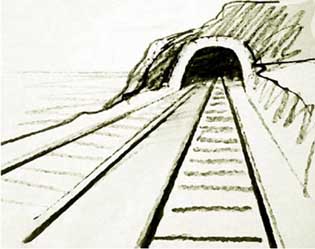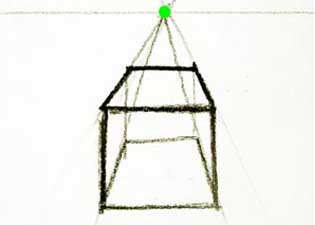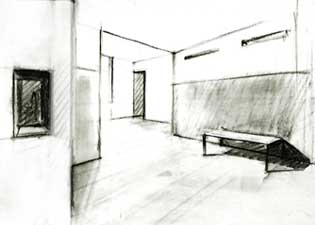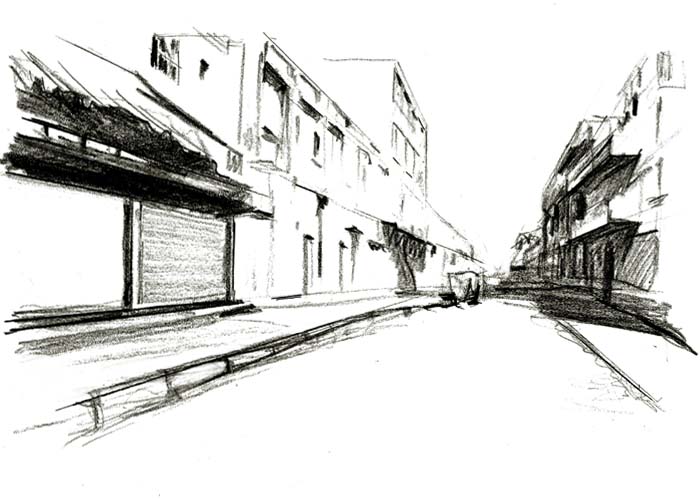How to Draw Perspective
This lesson focuses on the subjects of perspective and vanishing points.
The video shows a very quick sketch of a room (which is made up) that demonstrates the two point linear perspective, which is the most commonly used by artists. Notice the two vanishing points on the horizon. In this case both of the vanishing points are inside the sheet of paper. This is not always the case. When drawing, the vanishing points will always be on the horizon. The horizon will always be on the level of the eyes of the observer. Notice how on the sketch all the parallel lines converge to the same vanishing point.
Drawing interior spaces is a very good way to understand perspective. For practice, try drawing the rooms inside your house.
About Linear Perspective
Linear perspective in painting is a set of rules used to draw 3-dimensional objects on a flat (2-dimensional) surface. The subject can be quite elaborate but luckily you don't need to become an expert to be able to draw well. There are 2 basic rules of linear perspective that you need to remember:
- Objects that are closer appear bigger.
- Parallel lines intersect at the horizon.
 Click to enlarge image
Click to enlarge imageRule #1: Objects that are closer appear bigger.
Take a look at the drawing on the left. It depicts 3 black paintings hanging on a wall.
Do you think the paintings are of the same size in real life?
Are they the same size on the drawing?
The answer to the first question is YES. The paintings depicted here are of the same size in real life. The answer to the second question is NO. On the drawing, you can clearly see how the size of the paintings changes with distance. As the distance increases, so the paintings appear smaller. The painting that is the closest to us is the biggest one, the second is smaller and the last one is the smallest.
 Click to enlarge image
Click to enlarge imageRule #2: Parallel lines intersect at the horizon.
Take a look at the drawing on the left. It depicts railroad lines.
Do rails ever intersect in real life?
Do they intersect on the drawing?
The answer to the first question is of course NO. Rails never intersect in real life, they are parallel to each other.
The answer to the second question is YES. If you look inside the tunnel you will notice that all 4 rails (that are parallel to each other in real life) are going to meet at the same point. This point will be on the horizon.

One Point Perspective Example
The drawing on the left depicts a cube drawn in a 1 point perspective.
One point perspective is used to draw objects that are directly facing the viewer.
 Click to enlarge image
Click to enlarge imageTwo Point Perspective Example
The drawing on the left depicts a cube drawn in a 2 point perspective.
2 point perspective is the most commonly used in drawing. The cube on the left is a very good example of both rules of linear perspective. Notice how the frontal edge appears bigger (rule #1). Also notice how parallel lines converge to the same point on the horizon (rule #2).
 Click to enlarge image
Click to enlarge imageThree Point Perspective Example
The drawing on the left depicts a cube drawn in a 3 point perspective.
3 point perspective is rarely used in drawing. It is required when drawing very tall objects, such as buildings.
 Click to enlarge image
Click to enlarge imageThe perspective sketch from the video. Example of Two point perspective.
 Click to enlarge image
Click to enlarge imageA sketch of a street. Example of One point perspective.



